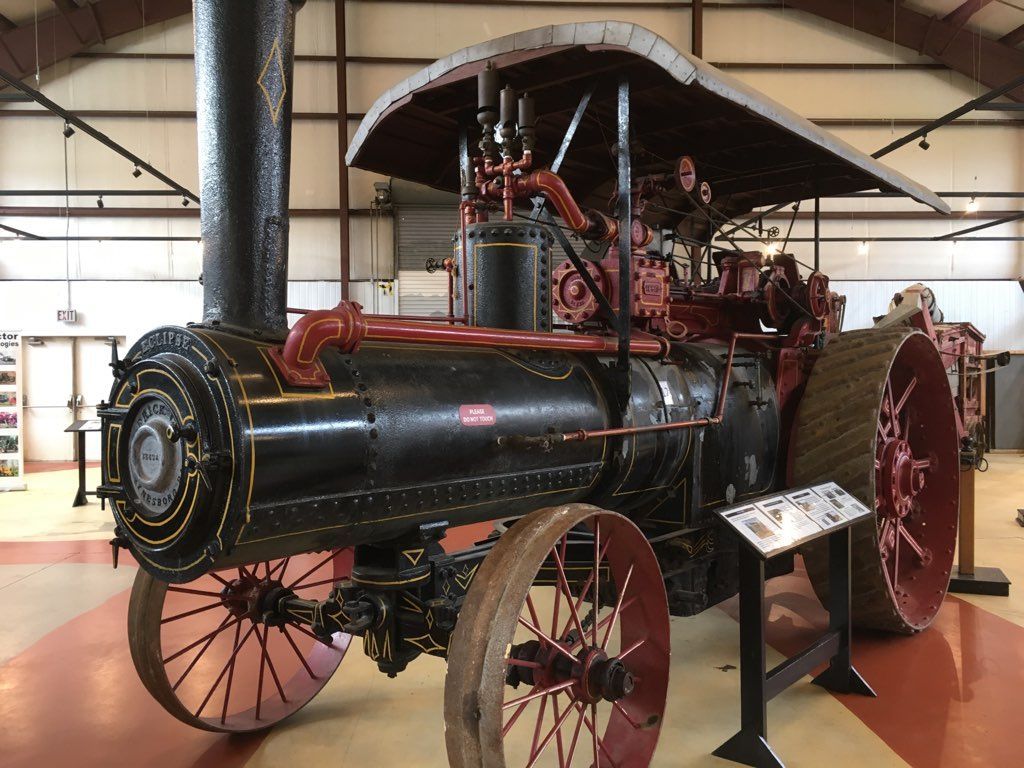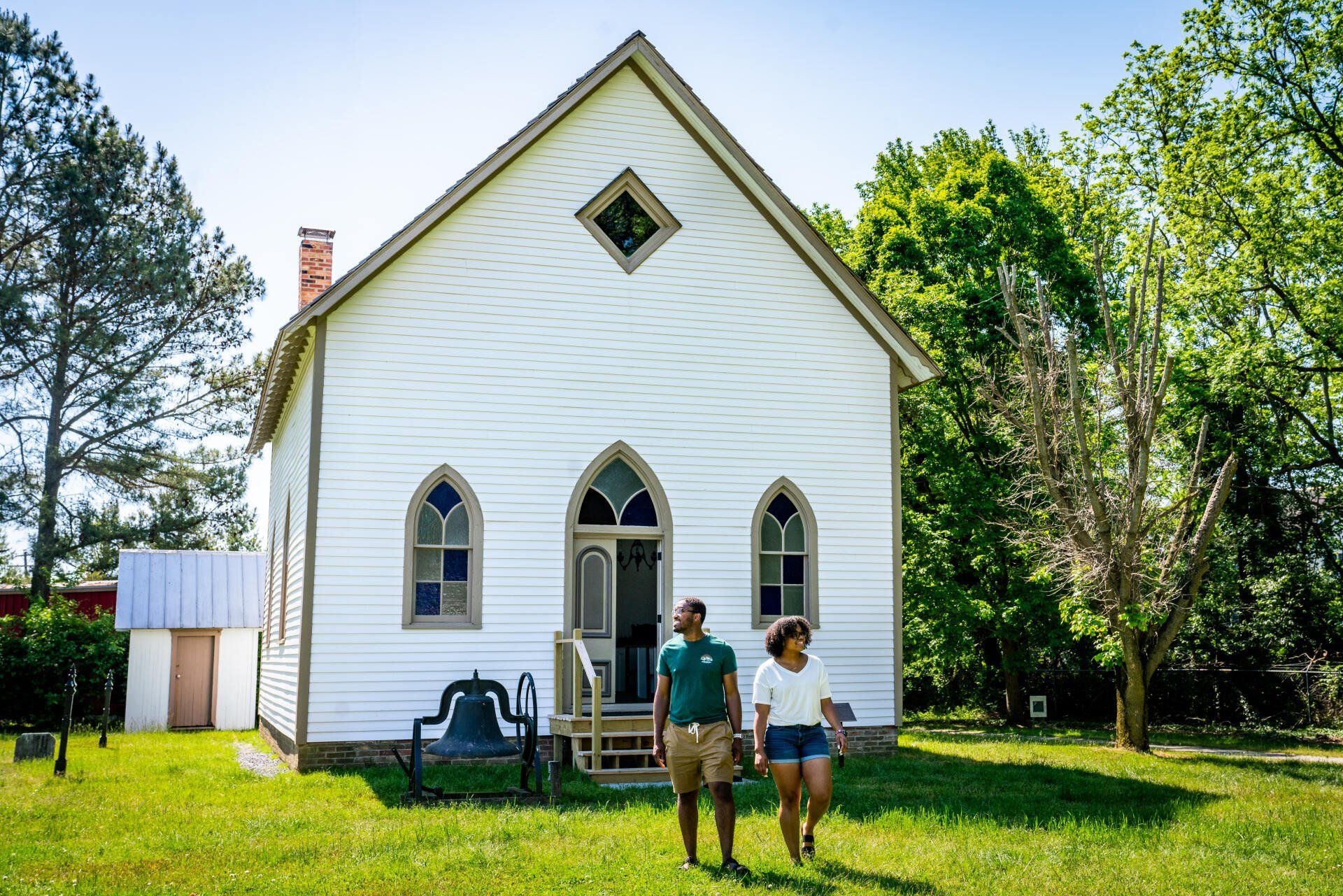Exhibitions & Features
Main Exhibition Hall

Delmarvelous Poultry
The history of poultry (chicken) farming on Delmarva is one of success through resilience and managing change.
Today, the broiler industry is one of the most successful sectors of the Delaware economy in terms of productivity growth.
Click the button below for more information.

Rural Eletrification
“Then One Day The Lights Came On” is a largescale permanent exhibition situated in the center of the Museum’s main exhibition hall and in select Village buildings. Click the button below to learn more!

Powering Inventions
"Necessity is the mother of invention," (proverb early 1800s). Using the knowledge and simpler tools of the past, farmers and inventors constantly came up with new and better ways of plowing, planting, and harvesting by trying out new machines and abandoning those that did not work.
Cick the button below to find out more!

Whittlin' History
Among the marquee exhibits at the Delaware Agricultural Museum and Village is Whittlin' History a permanent exhibit that displays and interprets the works of Delaware folk artist, Jehu Camper (1897-1989). Click the button below for more information!

Dairying in Delaware
Coming Soon! Click the button for more information.

Swedish Log House
This one-room log dwelling was originally located on Old State Road Station in New Castle County, Delaware. The structure was built in the late seventeenth or early eighteenth century. Mentioned in the 1720s will of Jasper Yeates, the house was likely standing prior to that date. Click the button below for more information!

Delaware Produce and Transportation
The Delaware Agricultural Museum’s upcoming exhibition “Delaware Produce and Transportation: Guiding the Eating Habits of the Nation” is organized by the Delaware Agricultural Museum in collaboration with the Smithsonian Institution Museum on Main Street (MoMs) program.
Loockerman Landing
-
Reed General Store
 Reed General Store
Reed General StoreThe Reed General Store was built in Woodside, Delaware (ca. 1873) by John and Jane Reed. The store represents the type and style of country stores found throughout the Peninsula during the late 19th century. At or about 1900, the Reed's turned over operation of the store to their daughter Mary Jane and son-in-1aw Phillip Jenkins. Click on the button below for more information.
-
Carney Farmhouse
 Carney Farmhouse
Carney FarmhouseWilliam Morris Carney and his wife, Sallie E. Carney were both of Native American ancestry. The Carney's built their first house on five acres of land in Cheswold, Delaware in 1893. In the years that followed, the Carney's had three children -- Thomas, Frazier, and Elizabeth.
-
Mill Lane School
 Mill Lane School
Mill Lane SchoolThe Mill Lane School was a one-room schoolhouse constructed in Middletown, Delaware, around 1850. Up to twenty-two children, ranging from first to tenth grade, were taught together in the school's 19 x 20 foot classroom. The Mill Lane School featured differentiated instruction, a mode of instruction where pupils received personalized direction from a single teacher. Click the button below for more information!
-
Woodside Train Station
 Train Station
Train StationWoodside was one of a number of Delaware towns that owed its existence to the Delaware Railroad and to a large extent, a man by the name of Henry Cowgill. According to local lore, the name "Woodside" was inspired by the piles of wood that were stacked near the station. Farmers brought corn, wheat, milk and other commodities such as peaches, by wagon to the Woodside Train Station where they were transported by train powered by steam locomotive to urban markets in Wilmington, Philadelphia and New York City. Click the button below for more information!
-
St. Thomas Methodist Episcopal Church
 St. Thomas Church
St. Thomas ChurchSt. Thomas Methodist Episcopal Church (ca. 1857) was originally located in Shortly, Delaware. The architecture is typical of 19th century rural churches on the Delmarva Peninsula. At its original location, the church had a small cemetery to the east and west of the building and was located off the road in a heavily wooded area. Click the button for more information!
-
Johnson & Son Blacksmith/Wheelright shop
 Blacksmith Shop
Blacksmith ShopThe Johnson & Son Blacksmith and Wheelwright shop was originally located near Staytonsville (Cedar Creek Hundred) in Sussex County, Delaware. The building was used by three generations of the Johnson family and was known historically as "Johnson's Blacksmith Shop." The blacksmith shop portion was built by Alexander Johnson (ca.1807-1886) around 1850. Alexander was a farmer, but like most rural farmers he probably found that it was useful to be able to repair and make his own tools and shoe his own horses. Click the button below for more information.
-
Silver Lake Mill
 Silver Lake Mill
Silver Lake MillHarnessing the power of water and wind to turn a wheel is one of humanity’s oldest mechanical energy sources. Among a variety of other uses, these early "green energy" resources were used to power grist mills in rural areas of the country. Click the button below for more information.
-
Gourley Barbershop
 Barbershop
BarbershopGourley Barbershop was built in 1900 by Harry Gourley of Magnolia, Delaware. A one-chair operation, Mr. Gourley cut children and men's hair. Click the button below to find out more!
